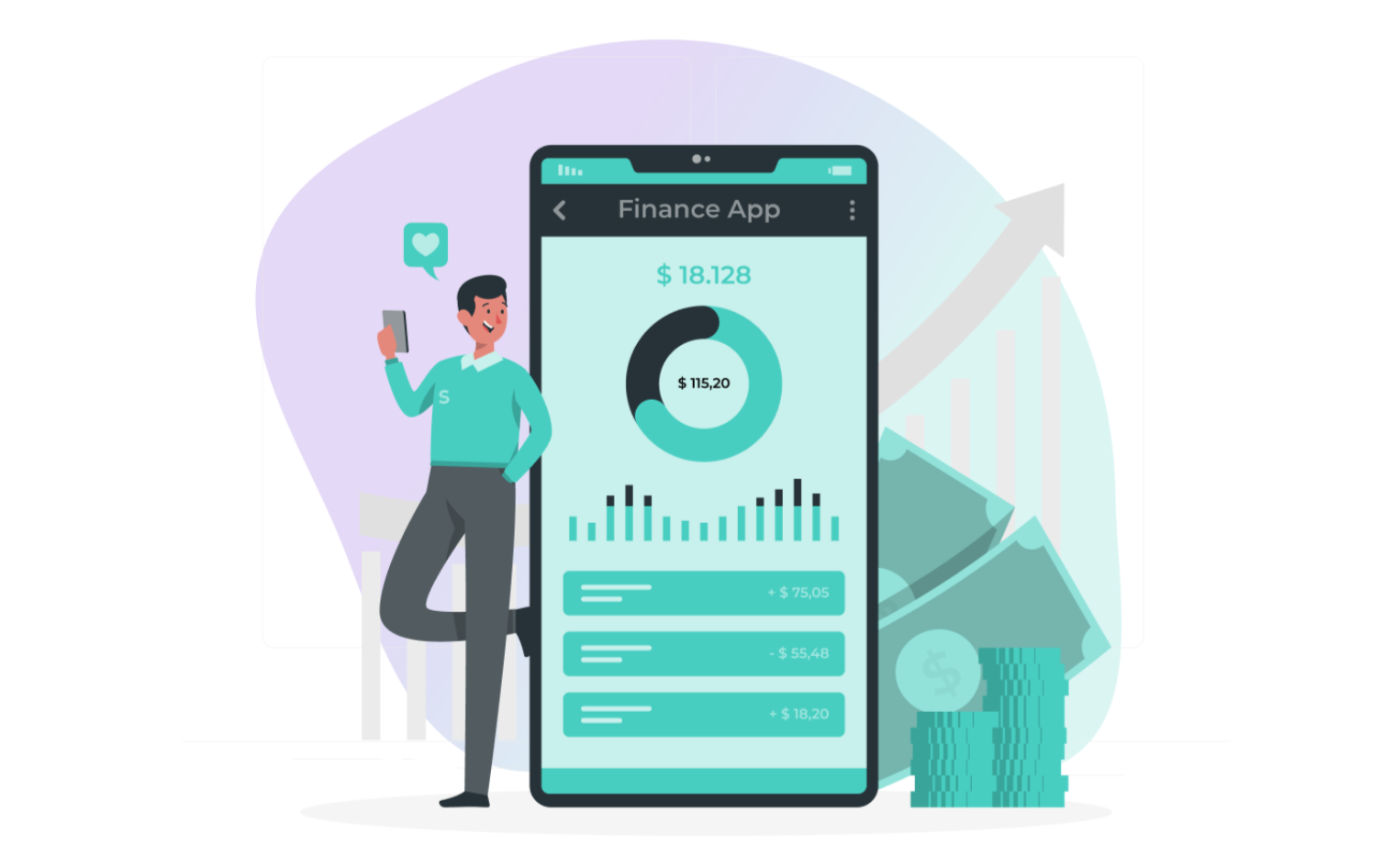As the world becomes more interconnected, there is an increasing demand for financial services that can be accessed anytime and anywhere. As a sort of financial service that eliminates the need for conventional banking procedures, money lending apps have grown in popularity.
In this article, we will discuss why we need money lending apps in 2023, their relevance, their security for the average user, the principles of operation of such applications and how to create a money lending app.
Why Do We Need Money Lending Apps in 2023?
The relevance of the money lending app sector has increased recently as a result of the quick and convenient loan possibilities it offers to both consumers and businesses. They are essential for people whose access to regular banking services is restricted, typically because of their credit history or lack of collateral. The COVID-19 pandemic has brought even more attention to the need for online, digital financial services. The fintech app development cost can vary greatly depending on the type of app, its complexity, and specific needs.
Money loan apps are anticipated to become even more advanced and effective in 2023 as a result of developments in technologies like blockchain, artificial intelligence, and machine learning. It is anticipated that this will lead to cheaper interest rates, quicker approval processes, and better terms for borrowers.
Relevance of Money Lending Apps
Customers seeking instant cash for emergencies as well as small business owners in need of working capital for operating costs can both benefit from money lending apps. They are especially helpful to people looking for small loans that conventional banks might not provide.
Money lending apps are also advantageous for investors seeking new investment prospects. These apps give users the option to invest in loans, which has the potential to produce better returns than conventional investing.
Security for the Average User
Security is a significant worry for users of money lending apps because financial transactions contain sensitive information. To protect user information and transactions, the majority of apps use encryption and other security features. Users must however keep up their caution and take measures to protect their personal data.
Customers should carefully read the terms and conditions before utilizing a money lending app. Additionally, they should confirm that the application makes use of strong passwords and crucial security precautions like two-factor authentication.
Principles of Operation of a Money Lending App
Peer-to-peer (P2P) lending is a common practice in money lending apps, where users can lend and borrow money from one another. The app facilitates transactions by serving as a link between lenders and borrowers.
For what they offer, money lending apps frequently charge a fee, which may include origination costs, processing fees, and servicing fees. Additionally, some lending apps may charge borrowers late fees and other fees if they don’t repay their loans on time.
Top 5 Popular Lending Apps
There are many lending applications available on the market, each with their own special features, benefits, and drawbacks. Here are the top 5 lending applications, along with a list of their advantages and disadvantages.
LendingClub
A P2P lending system called LendingClub links investors and borrowers. With fixed interest rates up to $40,000 and repayment lengths of up to 60 months, the site offers personal loans.
Advantages:
- Quick online procedure for applying
- No prepayment penalties exist
- Low interest rates compared to those for traditional lending
- Possibility of requesting combined loans
Disadvantages:
- Origination costs could increase to 6%.
- Minimum credit score of 600 is required
- It can take up to 7 days to fund
SoFi
SoFi is a financial company that places a high priority on mobile services and provides a variety of lending and investment options, including mortgages, personal loans, and student loan refinancing.
Advantages:
- No origination or prepayment penalties.
- Flexible terms of up to seven years for payback
- Low interest rates compared to those for traditional lending
- Extra benefits include networking opportunities and career mentoring
Disadvantages:
- Minimum credit score limit raised to 680
- Loans are limited at $100,000
- It can take up to 7 days to fund
Avant
Personal loans are offered by Avant, an online lending platform, to borrowers with less-than-perfect credit. With loan amounts up to $35,000, the site provides loans with fixed interest rates and repayment periods of up to 60 months.
Advantages:
- Process of applying online is quick and simple
- No early payment penalty
- Reduced credit score requirements compared to those of traditional lenders
- Possibility of requesting combined loans
Disadvantages:
- High origination costs that might reach 4.75%
- Greater interest rates than those of standard loans
- It can take up to 4 business days to fund
Prosper
Prosper, a platform for peer-to-peer lending, connects investors and borrowers and provides personal loans up to $40,000 with set interest rates and up to 60-month repayment periods.
Advantages:
- Simple application process online
- No penalties for paying early
- Cheaper interest rates than those for traditional loans
- Option for applying for loans jointly
Disadvantages:
- Origination charges may reach 5%
- A 640 credit score is needed as a minimum
- The fundraising process could take up to 5 business days
Upstart
Online lender Upstart uses artificial intelligence to evaluate the creditworthiness of potential borrowers. The website offers personal loans with fixed interest rates and up to 60-month repayment periods for amounts up to $50,000.
Advantages:
- Online application process that is quick
- No upfront fees are required
- Lower interest rates than those for traditional loans
- Reduced credit score requirements compared to those of traditional lenders
Disadvantages:
- Origination charges may reach 8%
- It can take up to 7 business days to fund
- A small selection of loans (only personal loans are provided)
Overall, each loan application offers advantages and disadvantages of its own. Considerations such as fees, interest rates, required minimum credit scores, and financing terms must all be considered in order to make the best choice. Before settling on one lending app, it’s also a good idea to evaluate other options and look over customer reviews.
Alternatives to a Money Lending App
Here are some alternatives to money lending apps that you can consider:
Traditional banks: Personal loans from conventional banks come with set interest rates and repayment conditions. They might provide lower interest rates and costs, but their application process might take longer than that of lending apps.
Credit unions: These nonprofit financial institutions provide flexible terms and competitive rates for personal loans. Furthermore, they might be more willing to work with borrowers who have less-than-perfect credit ratings.
Peer-to-peer lending platforms: Connecting borrowers and the private investors who fund loans is made easier by these platforms. They might charge larger fees and have stricter credit score requirements, but they might also have cheaper interest rates than traditional lenders.
Family and friends: Considering a little sum of money, you can think about borrowing from relatives and friends. However, it’s essential to set up a clear deadline and repayment schedule to avoid misunderstandings or interpersonal issues.
Credit cards: Using credit cards to pay for little costs or get a payday loan could be a good idea. But they frequently come with huge fees and interest rates. Therefore, in order to avoid building up debt, the balance must be paid in whole and on time.
In order to make the choice that best suits your financial needs and condition, careful examination of all accessible options is important.
Is a Money Lending App a Better Solution than Online Personal Loans?
Your financial status, credit score, borrowing requirements, and personal preferences are just a few of the considerations you should make when picking between money lending apps and online personal loans.
Mobile applications that offer fast and effortless loan access, with minimal paperwork and shorter approval times, are often preferred. They are also useful for individuals with lower credit scores who may not qualify for loans from traditional lenders. However, such apps frequently have higher interest rates and fees, which can accumulate over time.
On the other hand, conventional lenders like banks and credit unions might provide online personal loans with reduced APRs and costs. In contrast to a money lending app, they could need more detailed documentation and take longer to approve. Furthermore, they might set stricter criteria for credit scores, which could make it harder for people with poorer scores to get accepted.
In conclusion, customers with poorer credit scores who require quick loan access with minimal documentation may find that a money lending app is a better option. Nevertheless, individuals with exceptional credit and patience for a protracted application process may discover that conventional online personal loans from banks or credit unions provide more attractive conditions, like reduced interest rates and charges. It’s essential to weigh all realistic options, carefully consider client feedback, and choose the option that best suits your requirements and financial circumstances.
Conclusion
Due to their quick and simple loan availability with little verification, money lending apps have seen a substantial rise in popularity in recent years. Although they offer quick approval and accept clients with bad credit, they frequently have high interest rates and fees. Conventional online personal loans provided by banks and credit unions, in comparison, could require more paperwork and a longer approval procedure, but they might also have lower interest rates and costs. The best course of action will ultimately rely on the borrower’s financial circumstances, credit rating, and borrowing requirements. It’s critical to thoroughly consider each option and pick the one that best satisfies your needs and tastes.


